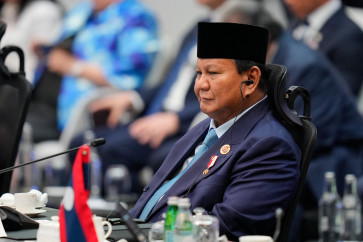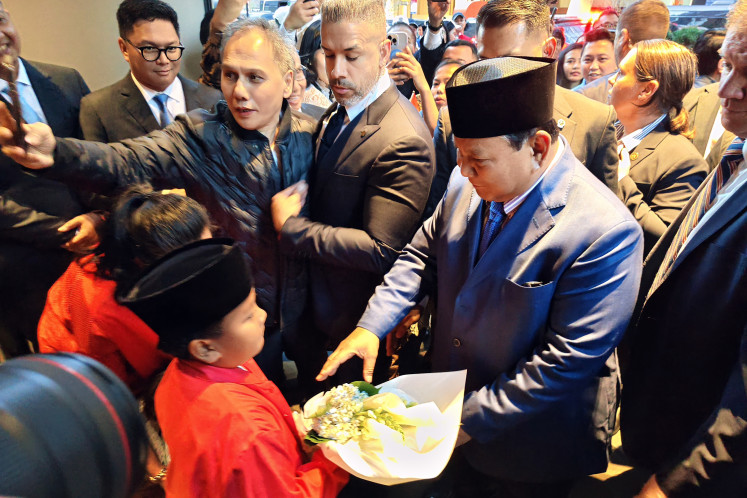Popular Reads
Top Results
Can't find what you're looking for?
View all search resultsPopular Reads
Top Results
Can't find what you're looking for?
View all search resultsSemanggi Interchange opens to motorists
The long-awaited expansion of Jakarta’s iconic Semanggi cloverleaf is finally complete
Change text size
Gift Premium Articles
to Anyone
T
he long-awaited expansion of Jakarta’s iconic Semanggi cloverleaf is finally complete. After 15 months of construction work, Jakarta commuters can at last use the new Simpang Susun Semanggi, or Semanggi Interchange.
The thousands of light-emitting diode (LED) lamps installed on the interchange can be seen twinkling from afar. As the colors and patterns change every few seconds, stressed motorists can enjoy a little relief in what is an area notorious for traffic congestion.
The interchange — which was the ambitious plan of the currently imprisoned former Jakarta governor Basuki “Ahok” Tjahaja Purnama — had its soft launch on Friday at 8:20 p.m.
Jakarta Governor Djarot Saiful Hidayat attended the launch together with Public Works and Public Housing Minister Basuki Hadimuljono and State-Owned Enterprises Minister Rini Soemarno.
“We hope that this development will be recorded in the history of infrastructure construction as the interchange with the longest arch span in Indonesia,” Djarot said.
The 1.8-kilometer interchange has two ramps: The first, 796 meters long, connects Slipi, West Jakarta, with Blok M in South Jakarta. The second, 826 meters long, connects Cawang, East Jakarta, with the Hotel Indonesia traffic circle in Central Jakarta.
State-owned construction company PT Wijaya Karya finished the project two months ahead of schedule.
Djarot paid tribute to Ahok, saying the work would not have been accomplished without Ahok’s courage in executing the development of the interchange, which is expected to reduce traffic congestion in the area by 30 percent.
He said the interchange would not solve the traffic problem but it could, at least, ease it amid the ongoing construction of the Mass Rapid Transit in the city.
Djarot, his wife Happy Farida, and Jakarta administration officials later walked to examine the interchange, which is designed with a traditional Betawi motif called gigi balang and cloverleafs, locally known as semanggi.
Djarot said with the opening of the interchange, the administration expected that drivers would maintain road discipline and drive safely. “I hope the interchange will be ready for the official inauguration by the President on Aug. 17,” he added.
The Jakarta administration has decided to ban motorcyclists from using the interchange for fear they might stop to take selfies, which could endanger their lives.
The interchange obtained its structural quality certificate from the Public Works and Public Housing Minister on July 14. During the load testing the interchange was found to have the capacity to bear a burden of up to 480 tons.
Minister Basuki said the interchange would be safe for motorists after several improvements were made. “We will finish off the lane marking and beautify the gardens around the interchange,” he said.
The Rp 360 billion (US$27.1 million) interchange was built without using city funds. Instead, it was fully financed by Mitra Panca Persada, a subsidiary of Japan-based property management firm Mori Building Company. Mori had agreed to finance the project in return for a higher building-floor coefficient permit.
The original budget for the project was Rp 579 billion and the city administration will use the remaining funds to repair sidewalks along Jl. Jend. Sudirman up to Bendungan Hilir in Central Jakarta and along Jl. Gatot Subroto from the Kartika Chandra Hotel to Taman Ria Senayan.










